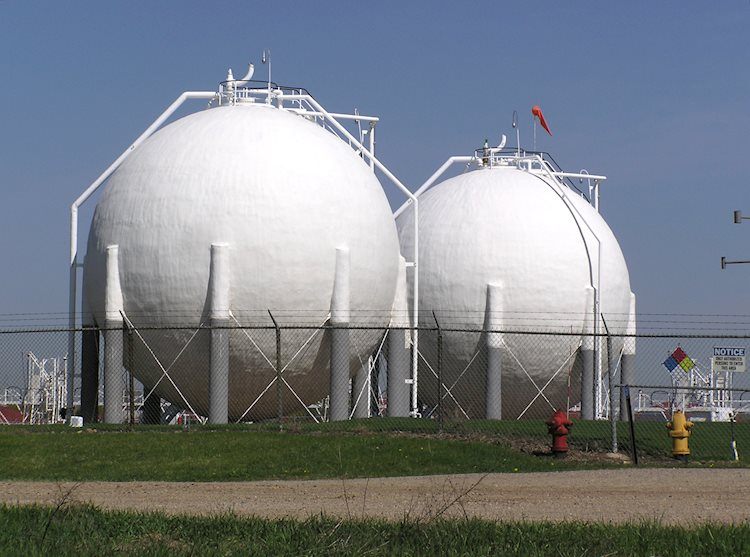- Natural Gas prices are heading lower in search of support.
- The US Dollar trades mixed, struggling to find direction.
- US Natural Gas prices reflect ongoing efforts to defuse Middle-East geopolitical tensions.
Natural Gas prices are heading lower, extending a sell-off that has been underway since last week. The mix that is pushing Natural Gas prices lower in both Europe and the US is one based on the simple economics 101 rule: bigger supply and normal to lower demand means a devaluing price of the good. And that is what is going on at the moment: supply is elevated, above normal, while demand is already lower than usual around this time of year.
Meanwhile, The US Dollar (USD) is under pressure as there isn’t any clearer sense of direction for the Greenback. The visit from US President Joe Biden to Israel has not played out as the White House wanted to. Meanwhile, the rate differential between the US is going rouge for all the wrong reasons: China and Japan have sold billions of US holdings in September.
Natural Gas is trading at $3.43 per MMBtu at the time of writing.
Natural Gas news and market movers
- European gas prices are expected to slide lower as more Western leaders are heading to Israel in an attempt to broker a ceasefire to resolve the conflict in the region.
- European gas inventories are still nearly full, with still very mild weather forecasts at hand for the European region.
- During the visit of Russian President Vladimir Putin in China, Chinese President Xi Jinping reiterated that China wants to deepen ties with Russia for grain and energy. Xi also said Chinais looking to build a gas pipeline between both countries and Mongolia as soon as possible, called Siberia 2.
- The International Gas Union has issued a report together with Rystad Energy which points to a supply deficit in the coming decades if investments in new supply research remains below par. At the current pace, by 2050 less than 1 trillion cubic metres of gas will be available against 4.1 trillion cubic metres currently available.
- Near 14:30 the Energy Information Administration (EIA) is due to release the weekly Gas Storage Changes. Expectations are for a drawdown from 84 to 80 billion cubic feet of gas.
Natural Gas Technical Analysis: upside pressure remains
Natural Gas is still up over 25% after the start of the turmoil in the Gaza region. And with the winter season ahead, volatility is expected to pick up. Prices are expected to broadly ease until temperatures start to drop and risk premiums will be factored in due to tensions in the Middle-East during the winter period, when demand is expected to surge.
With the firm peak and breakthrough out of the trend channel, it will be crucial that the upper band of that same trend channel acts as support. There aren’t any significant resistance levels except for $3.65, the peak of January 17. From there, the high of 2023 near $4.3080 comes into play.
On the downside, the trend channel needs to act as support near $3.37. In case this level breaks down again, Natural Gas prices could sink to $.3.07, with that orange line identified from the double top around mid-August. Should the drop become a broader sell-off, prices could sink below $3 toward $2.98, near the 55-day Simple Moving Average.
XNG/USD (Daily Chart)
Natural Gas FAQs
Supply and demand dynamics are a key factor influencing Natural Gas prices, and are themselves influenced by global economic growth, industrial activity, population growth, production levels, and inventories. The weather impacts Natural Gas prices because more Gas is used during cold winters and hot summers for heating and cooling. Competition from other energy sources impacts prices as consumers may switch to cheaper sources. Geopolitical events are factors as exemplified by the war in Ukraine. Government policies relating to extraction, transportation, and environmental issues also impact prices.
The main economic release influencing Natural Gas prices is the weekly inventory bulletin from the Energy Information Administration (EIA), a US government agency that produces US gas market data. The EIA Gas bulletin usually comes out on Thursday at 14:30 GMT, a day after the EIA publishes its weekly Oil bulletin. Economic data from large consumers of Natural Gas can impact supply and demand, the largest of which include China, Germany and Japan. Natural Gas is primarily priced and traded in US Dollars, thus economic releases impacting the US Dollar are also factors.
The US Dollar is the world’s reserve currency and most commodities, including Natural Gas are priced and traded on international markets in US Dollars. As such, the value of the US Dollar is a factor in the price of Natural Gas, because if the Dollar strengthens it means less Dollars are required to buy the same volume of Gas (the price falls), and vice versa if USD strengthens.
